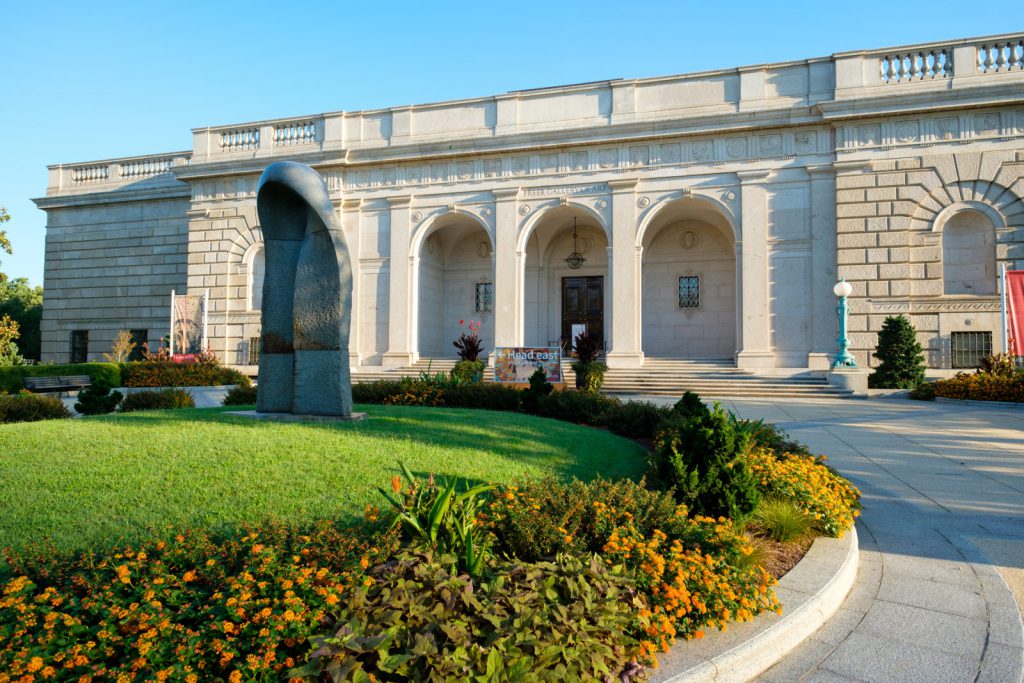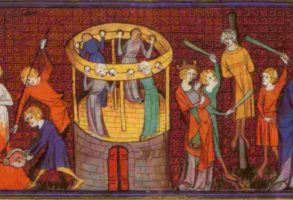
Published October 17, 2017
When it opened in 1923, the Freer Gallery of Art was the Smithsonian’s first art museum. Charles Lang Freer (1854-1919), a Detroit railroad tycoon, had been encouraged by Charles Moore, a former aide to Michigan Sen. James McMillan, to donate his collection of Asian art and work by James Abbott McNeill Whistler to the nation. Among the treasures of what is now a 26,000-work collection are a superbly carved sandstone Bodhisattva from northern China (c. sixth century), a fierce red wooden Japanese Aizen Myo’o (1293), and John Singer Sargent’s “Breakfast in the Loggia” (1910), a marvel of dappled sunshine and shadow.
In addition, the museum boasts over a thousand Whistlers, including the famed Peacock Room, a sumptuously painted London dining room that Freer bought in 1904 and reassembled in his Detroit home.
An autodidact guided by Whistler and the Asian art scholar Ernest Fenollosa, Freer pored over catalogs, read avidly, and traveled to explore works in situ (including five trips to China) and buy for his ever-expanding collection of Western and Asian objects. He believed that all art is linked by a beauty that is universal. Like those of his contemporaries Henry Clay Frick and Isabella Stewart Gardner, Freer’s collection is that rare thing: a product of the particular taste of one discerning person with a hunger for art and deep pockets to fulfill it.
For the museum, Freer worked closely with Beaux Arts architect Charles Platt to design an elegant neo-Renaissance building whose beautifully proportioned, luminous rooms, arranged around an open garden court, perfectly showcase his collection. Sadly, Freer died before it was completed.
It has now reopened after a major upgrade. Much of the work was done behind the scenes—improving climate control, security, the elevators and auditorium. But in the public areas, the Freer has been restored to its donor’s intent. Platt’s rooms, marvels of architectural reticence carefully designed to complement the art they house, and his severe barrel-vaulted corridors, wisely left unadorned, are themselves well worth a visit. Carpeting has been removed to reveal restored terrazzo floors, architectural details have been refreshed and natural illumination maximized.
Now seen in elegant, unobtrusive vitrines, the museum’s treasures are beautifully illuminated by natural and artificial light. The objects are carefully paced, encouraging the breathing room, leisurely study and silent contemplation that Freer wanted for masterpieces like a jade Bi disk from the Han dynasty (second century) or Whistler’s portrait (1902) of Freer himself.
Its adjacent sister institution, the Smithsonian’s Arthur M. Sackler Gallery, opened in 1987 to house a gift of some 1,000 works of Asian art from the New York psychiatrist and medical publisher, has likewise been refreshed, although a more striking and awkward marriage with Freer’s building would be hard to imagine (because they are connected underground, they are regarded as a single museum). The building is a postmodern eyesore. Entering through a neo-Victorian pavilion, the visitor descends into a warren of windowless subterranean galleries (over 90% of the building is below ground). A greater challenge to curators would be hard to contrive.
Director Julian Raby’s desire to attract, engage, instruct and sometimes amuse a large audience informs the temporary exhibitions in the Sackler celebrating the museums’ reopening. It’s an approach that Freer might have frowned on, but is a perhaps necessary nod to the different cultural climate in which the museum is operating.
Divided into five thematic sections, “Divine Felines: Cats of Ancient Egypt” (organized by the Brooklyn Museum and on through Jan. 15, 2018) is an intriguing, often lighthearted, examination of “the role and meaning” of the animal in Egyptian society. It will appeal to the legion of cat lovers who may view statuettes of cats, cats on rattles, and even a feline’s coffin. They also may be fascinated to learn that when a pet cat died, its owners shaved their eyebrows.
Featuring “two experiential spaces,” video, digital tablets and more than 300 objects spanning 18 centuries, “Encountering the Buddha: Art and Practice Across Asia” (through Nov. 29, 2020) seeks to “illuminate the ways in which art and place express the teaching of Buddhism.” Overall, the exhibition serves as a good introduction, not only to one of the world’s major religions and the diversity of its interpretations, but also to some of the grandest objects in the museum’s collection, including two imposing busts of arhats from the Ming dynasty.
“Resound: Ancient Bells of China” (through 2020) is a user-friendly display that explores the many functions of Chinese bells. One learns that these bells—there are 60 of them here—are not simply utilitarian objects, but works of art that just happened to ring. The history of Chinese bells, their manufacture, use and different sounds are interestingly explored, the last through a series of digital graphs generated by the visitors tapping two modern bells.
There’s also an installation piece by the contemporary Indian artist Subodh Gupta (through Feb. 3, 2019) featuring towers (some 13 feet high) made of common brass food containers interwoven with cloth strings.
Cognoscenti of Asian art as well as tourists to the National Mall will find joy, knowledge and instruction in the Freer and Sackler Galleries. It’s good to see them in such fine fettle.
—Mr. Cole, a former chairman of the National Endowment for the Humanities, is a senior fellow at the Ethics and Public Policy Center.








